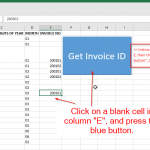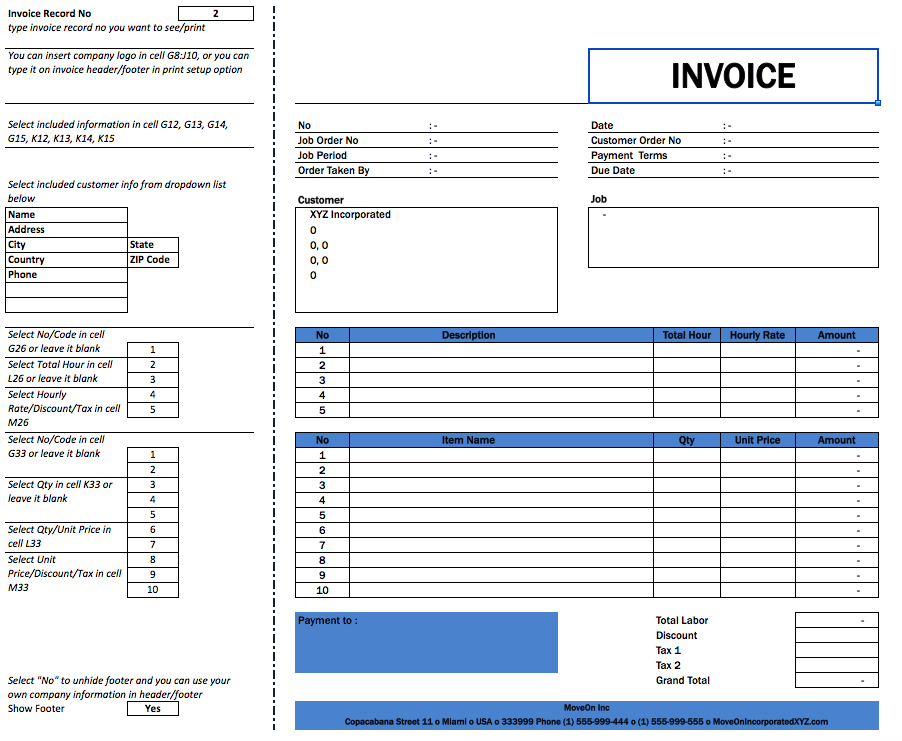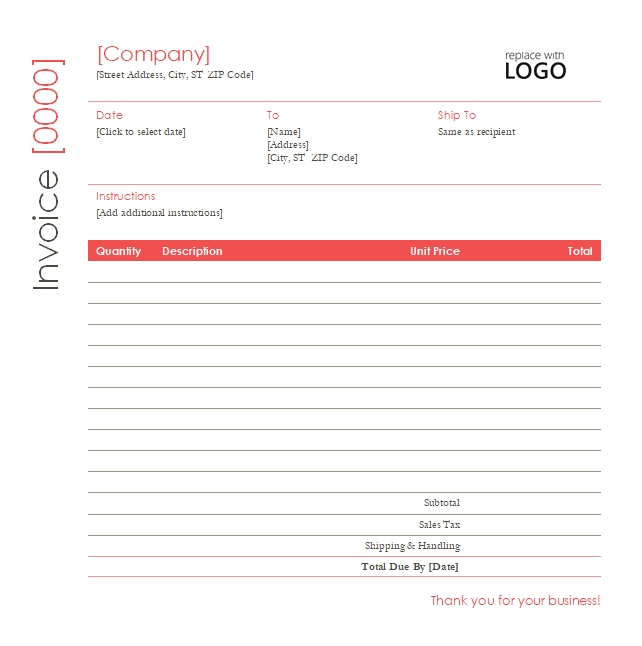Invoice Number Generator Excel Template

This template can be used to automatically generate invoice numbers for your business.

Instructions:

- Enter your company name in cell B2.
- Enter the starting invoice number in cell B3.
- Enter the prefix for your invoice numbers (optional) in cell B4.
- Enter the suffix for your invoice numbers (optional) in cell B5.
- To generate an invoice number, simply enter a new date in column A. The invoice number will be automatically generated in column B.
Example:
| Date | Invoice Number |
|---|---|
| 2024-01-01 | 2301010001 |
| 2024-01-02 | 2301020242 |
Additional Features:
- The template can be customized to fit your specific needs. For example, you can change the font, color, or size of the text.
- You can also add additional columns to the template to track other information, such as customer name, invoice amount, or payment status.
Download the Template:
To download the free Invoice Number Generator Excel template, click on the following link:
[Invoice Number Generator Excel Template]## [Invoice Number Generator Excel]
Executive Summary
This article provides a comprehensive guide to using Excel to generate unique invoice numbers, ensuring efficient invoicing processes and seamless record-keeping.
Introduction
Invoice numbers are crucial for tracking and managing invoices, facilitating easy retrieval, reducing errors, and maintaining proper accounting records. Manual invoice number generation can be tedious and prone to mistakes. This article presents a step-by-step guide to leveraging Microsoft Excel’s capabilities to automate invoice number generation, enhancing accuracy and streamlining accounting operations.
FAQs
1. Why is an invoice number generator essential?
- Reduces manual errors
- Ensures unique invoice identification
- Facilitates efficient invoice tracking and retrieval
2. What key features should an invoice number generator possess?
- Automatic number generation
- Customization options
- Sequential or random number generation
3. Can an invoice number generator be integrated with other software?
- Yes, many invoice number generators offer API integration for seamless connection with accounting or CRM systems.
Subtopics
1. Understanding Invoice Numbering Systems
- Sequential Numbering: Assigns consecutive numbers to invoices
- Random Numbering: Generates random, unique numbers for each invoice
- Prefixed Numbering: Adds a prefix or suffix to the invoice number for better organization
- Custom Numbering: Allows users to define their own numbering patterns
- Legacy Numbering: Supports specific numbering formats used by legacy systems
2. Configuring Excel for Invoice Number Generation
- Create a New Worksheet: Open a new Excel worksheet and add column headers for invoice data.
- Insert a Formula: Use the formula “=ROW(A1)” to generate sequential invoice numbers.
- Add a Prefix or Suffix: If required, add a prefix or suffix to the formula using the “&” operator.
- Format the Invoice Number: Apply appropriate formatting to the invoice number column, such as text or numeric format.
- Save and Protect the Worksheet: Protect the worksheet to prevent unauthorized changes to the formula.
3. Advanced Features for Customized Invoice Numbering
- Conditional Formatting: Highlight or format invoice numbers based on specific criteria, such as overdue invoices.
- Data Validation: Ensure the validity of invoice numbers by setting data validation rules.
- Multiple Numbering Systems: Combine different numbering systems for different types of invoices.
- Synchronization with Other Systems: Integrate with accounting or CRM software to automatically update invoice numbers across systems.
- Cloud Accessibility: Store the Excel file in the cloud for easy access and collaboration.
4. Tips for Effective Invoice Numbering
- Use Unique Numbers: Ensure that invoice numbers are distinct and do not repeat.
- Keep It Simple: Avoid complex numbering formats that can be difficult to remember or track.
- Maintain a Record: Keep a record of invoice numbers for future reference and auditing purposes.
- Consider Business Needs: Tailor the invoice numbering system to align with the specific requirements of the business.
- Seek Professional Assistance: If needed, consult with an accountant or IT professional to optimize the invoice numbering process.
5. Benefits of Using an Invoice Number Generator
- Increased Efficiency: Automates invoice numbering, saving time and reducing manual errors.
- Improved Accuracy: Ensures unique and consistent invoice identification.
- Enhanced Organization: Enables easy invoice tracking, retrieval, and record-keeping.
- Professionalism: Provides a professional and streamlined appearance for invoices.
- Compliance: Facilitates compliance with accounting regulations and industry best practices.
Conclusion
Utilizing Excel for invoice number generation offers numerous advantages, including increased efficiency, improved accuracy, enhanced organization, professionalism, and compliance. By understanding the principles, configuring Excel effectively, and implementing advanced features, businesses can establish a robust invoice numbering system that meets their specific needs. Integrating with other systems and leveraging tips for effective invoice numbering further enhances the process. By following the guidance outlined in this article, organizations can harness the power of Excel to streamline their invoicing processes and achieve greater efficiency and accuracy in managing their financial records.
Keywords
- Invoice Number Generator
- Excel Invoice Numbering
- Automated Invoice Numbering
- Invoice Numbering Systems
- Invoice Tracking and Management
